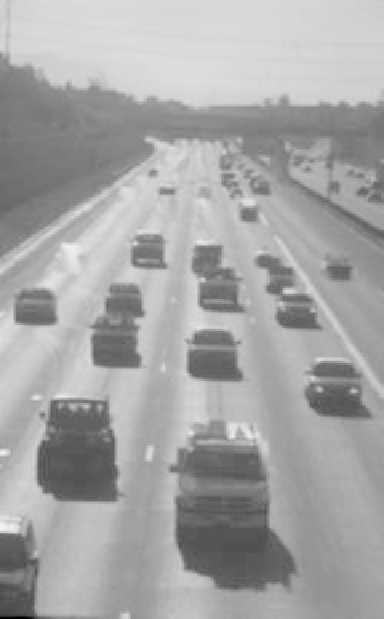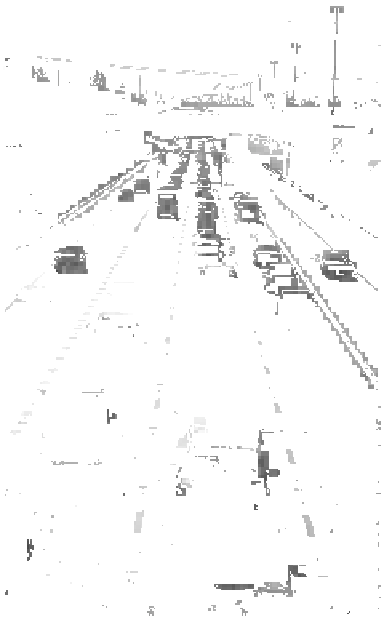Environmental Engineering Reference
In-Depth Information
FIGURE 14.3
Freeways are not really transportation systems: they are habitat for cars.
network of highways. As sprawl intensified between 1990 and 1999, the number of miles
Americans drove increased 24% and the amount of roadway per person grew by 17% in
the 23 metro areas with the greatest increase in road building (Figure 14.3).
14
According to MAG, residents of Maricopa County travel a combined 67 million miles on
an average weekday. This number is expected to grow by 140% over the next 40 years.
15
With rising gas prices, now well over 3 dollars per gallon, vehicle miles traveled did
decrease some, including in 2008 when they were at over $2/gal. In View of the Valley in
2040, the MAG projects that the regional costs for transportation will be between $45 and
$50 billion
12
—and if recent transportation plans are any indication; most of the dollars
will be devoted to roads. A small percentage of the federal transportation dollars is used
for transit, and all of the Highway User Revenue Funds (which consists primarily of
gas tax), plus about two-thirds of a half-cent sales tax, are used for roads. The Regional
Transportation Tax passed in 2004 extended the sales tax for another 20 years and directed
about a third of the dollars to transit. While this was a vast improvement, it still guarantees
a transportation system heavily weighted toward roads and freeways.
10
In Phoenix, 89% of the workforce drove or carpooled to work with only 3% using
public transportation in 2007.* To discover the reason, one needs to look no further than
transportation spending. While the Phoenix area spends millions of dollars each year to
*
http://www.clrsearch.com/RSS/Demographics/AZ/Phoenix/Drive_Time (accessed July 23, 2009).


Search WWH ::

Custom Search